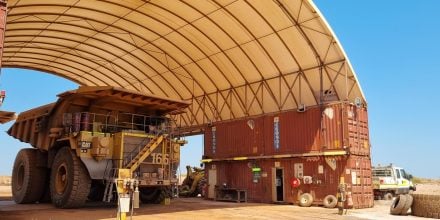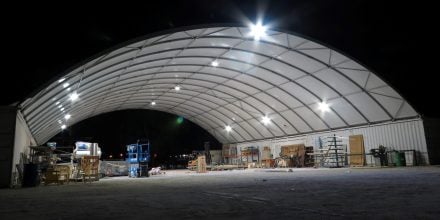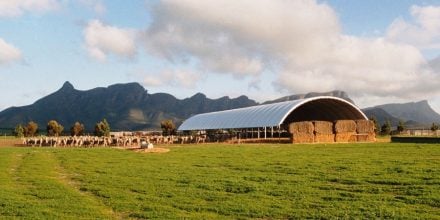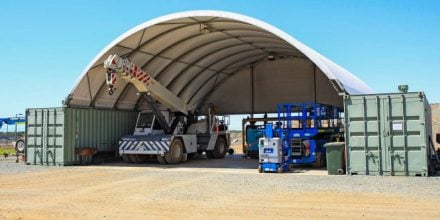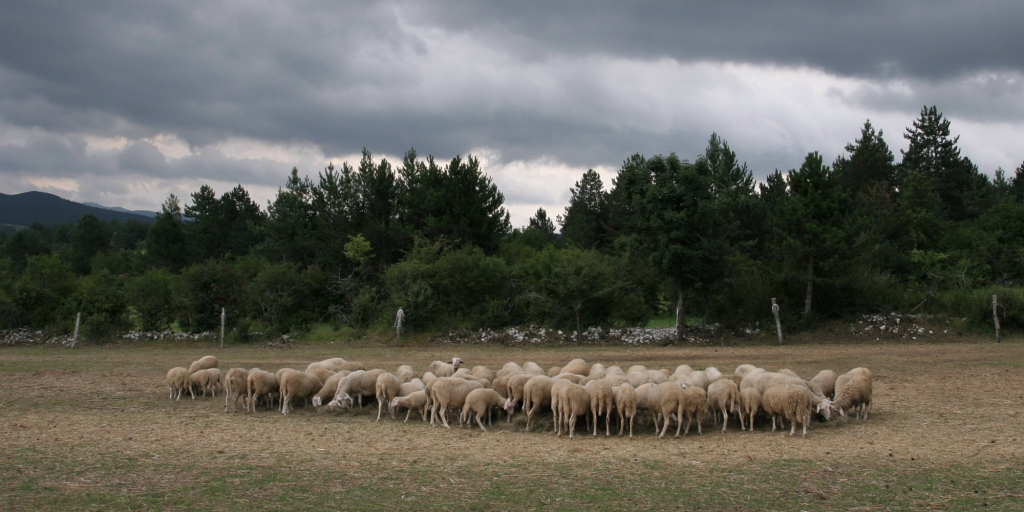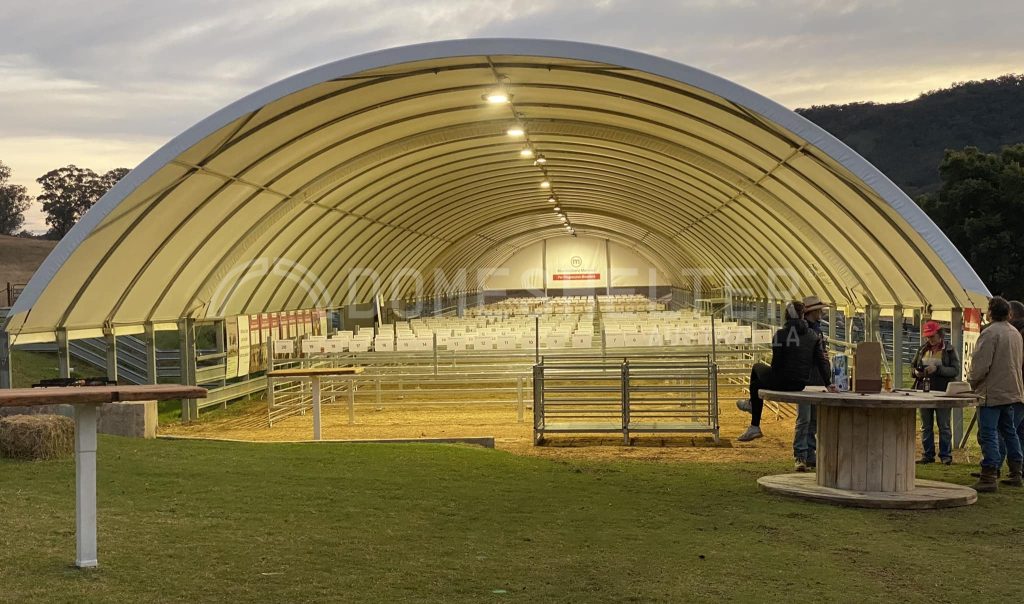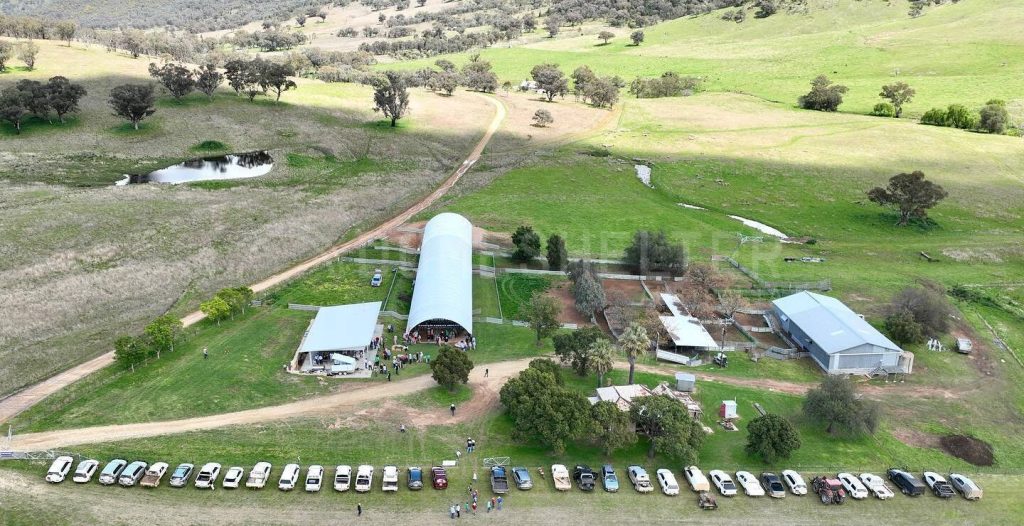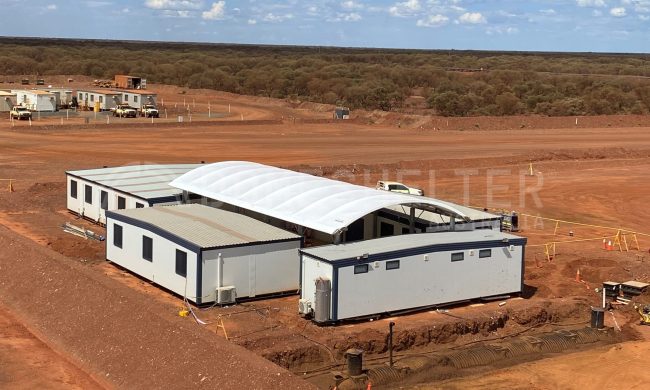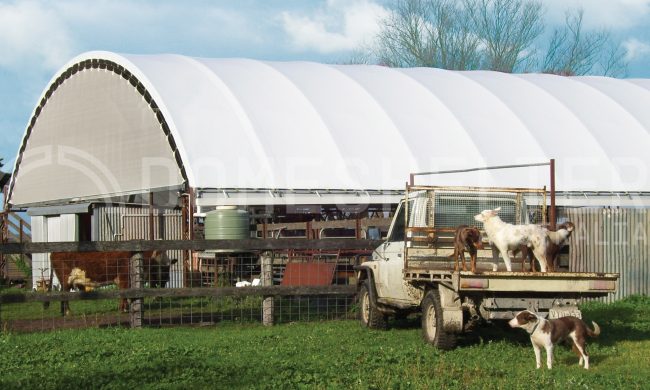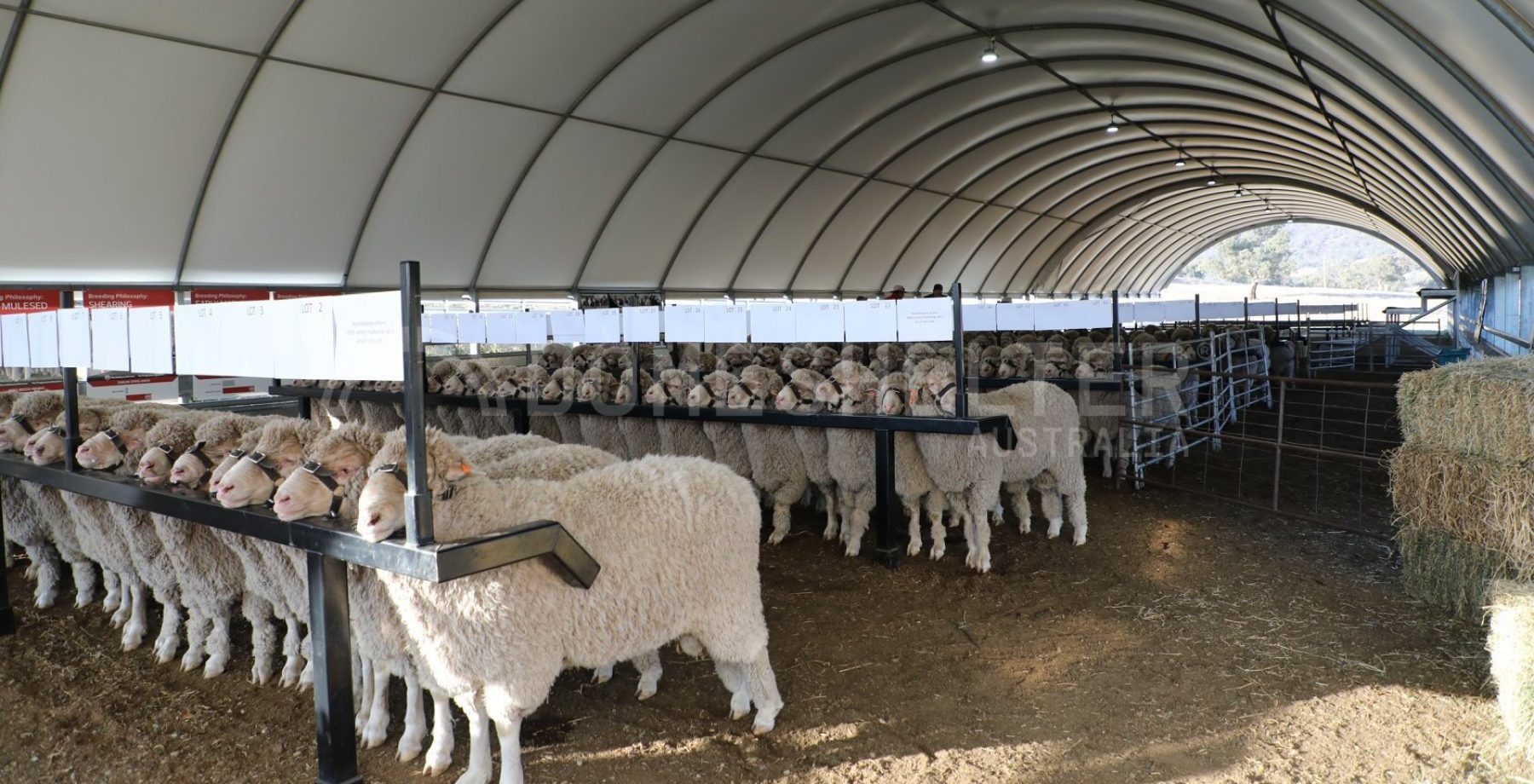
In agriculture and livestock management, the importance of well-designed stockyards is significant. These spaces play a pivotal role in facilitating various essential tasks, including the sorting and weighing of livestock, administering treatments, holding auctions, and more. However, the farming landscape is evolving, and the demand for innovative solutions is becoming increasingly apparent. These solutions aim not only to enhance operational efficiency but also to prioritise the welfare of both livestock and workers.
This article discusses the benefits of shifting from traditional open-air stockyards to the adoption of covered stockyards. We will examine how these enclosed structures bring about a profound change in approach, enhancing efficiency and well-being and aligning with modern approaches to livestock management. Through real-world success stories and comparisons, we will uncover the benefits of covered stockyards, shedding light on a more sustainable and productive future for the agriculture and livestock industries.
Risks of Uncovered Stockyards
Shelter can help improve the welfare of sheep and reduce protection losses. Sheep without shelter need to put more energy into functioning. This means they have less energy for growth and production. Exposure to the elements can also lead to stress in livestock, which can be fatal; for example, mortality of lambs can be reduced by 50% if effective shelter is provided.
Section 9 of the Prevention of Cruelty to Animals Act 1986 defines cruelty offences and specifically requires that “proper and sufficient shelter” is provided for animals.
The Victorian Department of Agriculture specifically refers to holding yards in its outline of livestock welfare guidelines. “When sheep are in holding yards, use should be made of artificial and natural shade to protect them from extremes of wind, heat and cold”. They specifically point to young animals, stating that it is especially important that shelter is provided “if they are left in yards for longer than two hours before transport and loading”.
Meat & Livestock Australia has also undertaken intensive study projects in partnership with Australian universities to better understand the impact of shade and shelter on sheep reproduction and welfare.
Heat stress, these studies prove, leads to reduced fertility and lower lamb survival. Likewise, cold stress increases the mortality rate of newly shorn sheep and lambs.
“Extreme climatic variation (wind, rain and temperature) poses a significant stress on extensively-managed sheep,” they state. “Shade and shelter minimise heat and cold stress to improve the production and welfare of sheep as well as having amenity values and other benefits for pasture production and biodiversity.”
Benefits of Covered Stockyards
Providing cover for holding yards and stockyards has a number of significant benefits for agricultural and livestock operations. Shelter provides:
- Protection from weather events and harsh elements: Protecting both livestock and workers from the negative and potentially harmful effects of harsh weather.
- Improved livestock handling: Reducing the potential for exposure to climactic variations in turn reduces agitation and stress in animals. This also flows on to easier and safer handling of livestock during various operations.
- Enhanced operational efficiency: Shelter allows for the safe continuation of work even in harsh weather, increasing productivity and reducing disruptions and downtime. A safe and enjoyable workplace keeps staff focused and out of the elements.
- Increased longevity of equipment: Crushers, pens, handlers and other equipment will suffer wear & tear and deterioration if exposed to harsh conditions. Shelter can significantly extend the lifespan of equipment, saving capital and minimising time spent on maintenance.
Real-life experiences of farmers can attest to the considerable benefits of investing in a sheltered stock holding yard.
Case Study: Mumblebone Merino’s Covered Stockyard
Mumblebone Merino Stud is one of Australia’s leading suppliers of high-quality Merino rams. They hold ram sales on their property outside Wellington in New South Wales, involving large numbers of both livestock and patrons.
After attempting to host ram sales in inclement weather and experiencing the dangerous collapse of a temporary marquee during particularly challenging weather, Mumblebone realised a reliable, permanent solution was necessary to keep their livestock and people protected from the elements.
Their AgShelter® Solution not only ensures protection from the weather, keeping patrons safe and dry and helping reduce animal stress, but the acoustics within the Shelter are significantly more pleasant than in a steel shed.
Additionally, Mumblebone were able to easily and quickly extend their AgShelter® to respond to changing site needs, thanks to the unique modular nature of Fabric Shelters.
To learn more about Mumblebone’s AgShelter®, watch their testimonial video below.
DomeShelter™ Structures for Covered Stockyards
DomeShelter Australia’s operations began over 25 years ago, servicing the agricultural industry.
Fabric Shelters are the modern alternative to traditional steel sheds; durable, easy-to-install, and fully customisable, they offer advantages in the areas where steel structures can be lacking.
DomeShelter™ Structures are manufactured using 100% Australian Steel and high-quality, specially developed Armourtex® Fabric Tarp, that is heavy-duty and tear-resistant. They are fully engineered by a dedicated in-house team, able to withstand up to Australian Wind Region D – Cyclonic wind speeds.
Fabric Shelters have much shorter lead times than traditional buildings, especially in light of steel shortages in recent years. They are also quick and easy to install – installation time ranges from just a few days to a few weeks, depending on the size of the Shelter.
DomeShelter Australia has developed a proven three-step process, ensuring an efficient but thorough purchasing process for all clients. A standard range is available for basic, quick turnaround projects, but for projects with greater complexity benefit from an experienced design team, who specialise in delivering Fit-For-Purpose solutions that respond to every client need and deliver long-term results.
Fabric Shelters are also relocatable, with less intensive footings than steel sheds. This unique benefit means that they can be moved in response to changing needs on the farm, delivering long-term value and optimised through-life.
Walls can be left open, partially or fully, to allow fresh air to pass through the structure, also providing better temperature control than steel structures, which can become incredibly hot and stuffy in the summer months.
No need for internal support poles – regardless of the size of the structure – means a large, obstruction-free internal space that can be outfitted however best suits the client’s needs. The Fabric Tarp is semi-translucent, allowing bright, even light to pass through and fill the Shelter. This not only makes for a safer, more pleasant environment, but can help save energy costs by reducing the need for artificial light.
Cost-Effectiveness and Long-Term Investment
While the initial cost of implementing covered stockyards may appear higher than open-air alternatives, the lasting benefits far outweigh the upfront expenses. The comprehensive protection offered by covered stockyards significantly contributes to reducing livestock agitation and stress.
Not only considering the ethical responsibility to safeguard the wellbeing of livestock, by mitigating exposure to climatic variations, covered stockyards help reduce livestock agitation and stress. This facilitates smoother livestock handling processes, and ensures reduced livestock losses and increased productivity.
Get in Touch
As the world of agriculture and livestock management evolves, the significance of well-designed stockyards become increasingly clear. These spaces serve as critical hubs for essential tasks, ranging from livestock sorting and weighing to administering treatments and hosting auctions. Innovative solutions are emerging to enhance operational efficiency while prioritizing the welfare of both livestock and workers.
In a real-world application, the case study of Mumblebone Merino’s covered stockyard exemplifies the positive impact on livestock well-being and operational efficiency. With DomeShelter™ Structures, farmers can embrace an efficient, sustainable, and adaptable solution to their stockyard needs. Get in touch with the DomeShelter™ Team today to learn more about how a Fit-For-Purpose AgShelter® Solution can improve work conditions at your agricultural operation.




